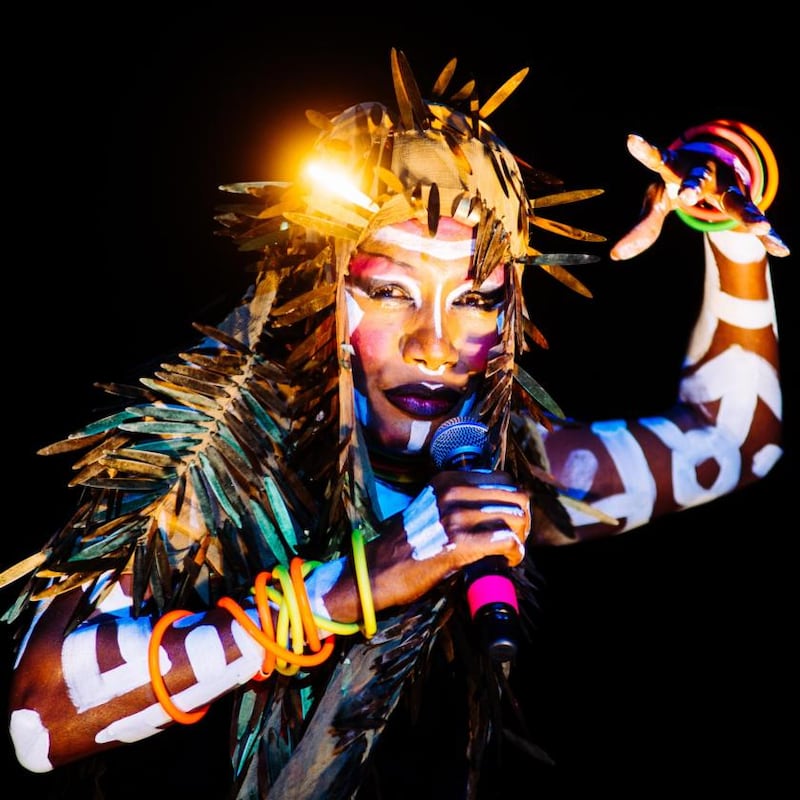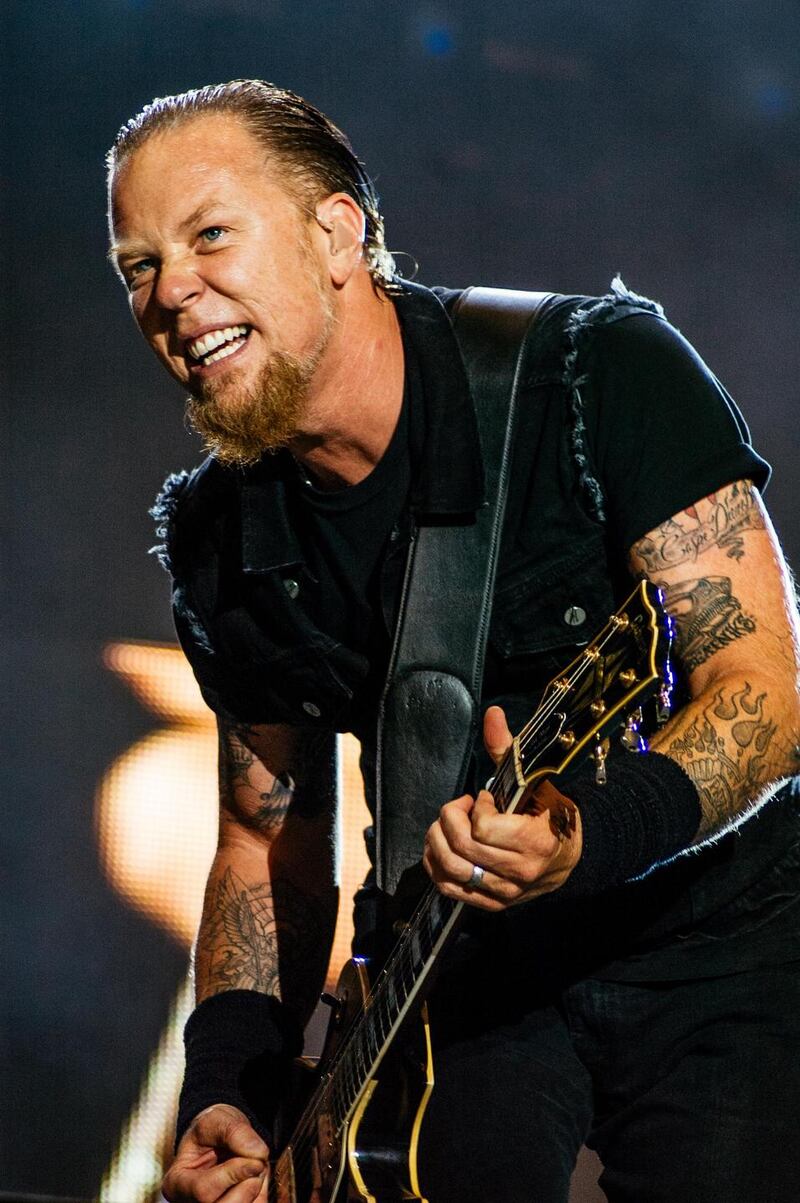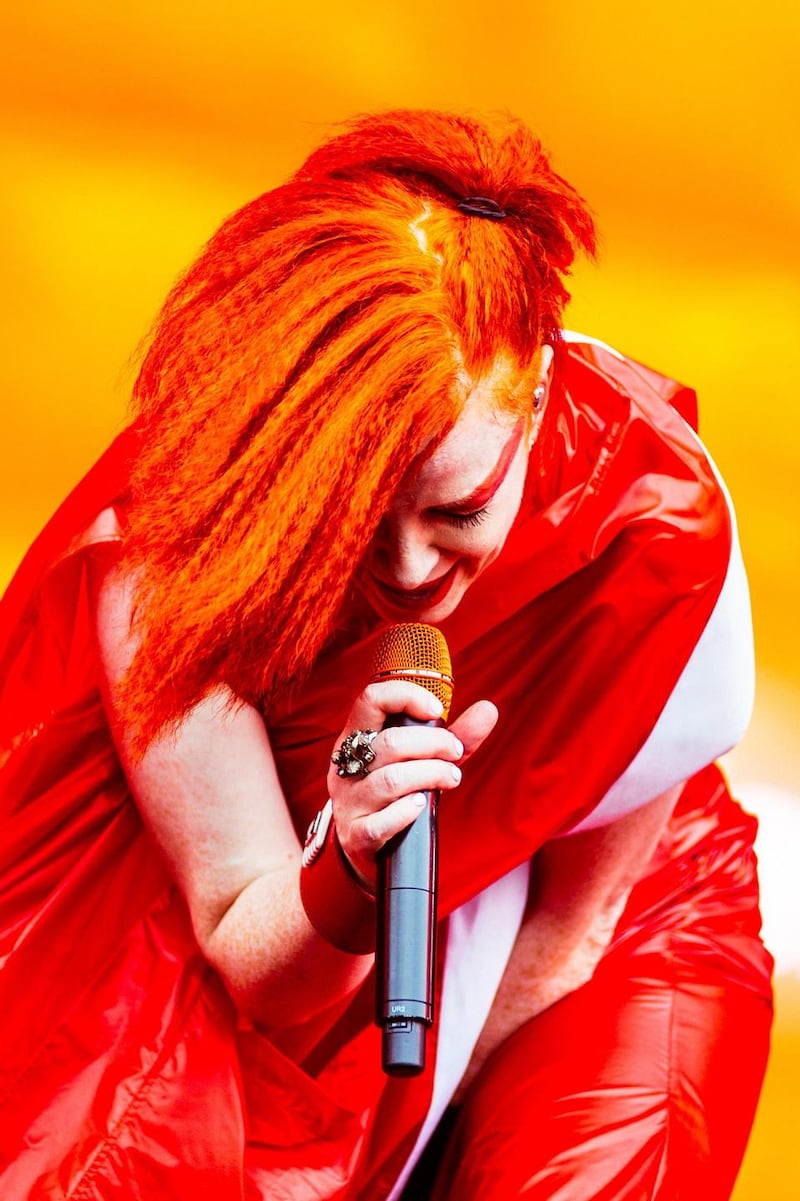The trade accessories in Ruth Medjber’s Dublin photography studio are here for all to see: printouts, camera equipment, laptops, large background sheets of cloth and plastic, signs displaying self-help texts (“Life is like photography – you need the negatives to develop”) and so on.
Even the square upper window on the entry door to her studio tells a tale of what might go on behind it: it is adorned with a large multicoloured collage of Ye Olde Image Slides, an autobiographical throwback to when Medjber, as a nipper-snapper, first dabbled with the craft. It was, she says, all her father’s doing.
“He was big into photography, but he used to sell camera equipment – all old school before the days of digital. It was before I started school, and instead of putting me into childcare he brought me around with him in the back of his car, so I’d be on the road with him.”
From around 12 or 13, music became the obsession. It was all about Placebo's Without You I'm Nothing, and Manic Street Preachers' The Holy Bible
Surrounded by equipment but not necessarily photographers, Medjber points to the annual Christmas present of “cheap and cheerful plastic cameras” that made her progress at the age of five from random images (“light switches, toilet bowls, people’s shoes”) to evolve into a budding photographer as a teenager.
"From around 12 or 13, music became the obsession. It was all about Placebo's Without You I'm Nothing, and Manic Street Preachers' The Holy Bible. I sought out my tribe, which I found at Temple Bar Music Centre [now Button Factory] and the areas around Central Bank on Dame Street."
Learning curve
Then came the Blast shows at Temple Bar Music Centre, she recalls, a non-profit series of gigs for teenagers run by teenagers (with moderate adult supervision). Medjber remembers this time (2000-2004) as being a typical teenager’s learning curve. She dyed her hair and “went off the rails in a very productive way. I knew I couldn’t sing a note or play an instrument, but I wanted to be involved with music in any way.”
Within time, she had got herself a digital camera. Enabled as much by the equipment as her burning ambition she would, she laughs, march into Temple Bar Music Centre’s tiny dressing room, say to the band that she was their photographer for the night, and start pressing the buttons. “That was when I started to call myself a photographer.”
Embarking on a BA in photography seemed the next logical step, but in the third year of her four-year course, she started to get regular work with Hot Press magazine. Her ambitions ran in parallel with the rapid increase of her skills, and after graduation she added other publications such as NME, Rolling Stone, Kerrang! and Classic Rock to her expanding CV.
In person, Medjber is as forthcoming as the day is long, but she agrees that as a previously “painfully shy” child, holding something in front of her that places her in a position of authority allows her natural introversion to evaporate.
“Photography has taught me that. I had to be able to meet someone and within 10 minutes make them trust me enough to take photographs of them. I was severely shy – I wouldn’t even talk to my aunties and uncles – but when I started getting into photography it changed me, massively. It still helps me, and it helps me to process so much stuff that’s going on in my personal life: coming into the studio, listening to music, taking self-portraits . . . I often joke with people that I don’t need a therapist because I have a camera.”



Firmness
Being severely shy didn’t prevent Medjber from asserting herself from the get-go. Aligned with her craft was a perfectly reasonable mindset of what she terms “gung-ho confidence”, a trait she perhaps soaked up as a child from being on all those camera-selling road trips with her father. Along with her prowess as a photographer, such firmness has got her to where she is today: one of the most in-demand shutterbug merchants in the music industry.
As we speak, she is in full preparation for her forthcoming debut solo exhibition, Ruthless: a Decade of Live Music Photography. The collection highlights not only her range of subjects (from big hitters Beyoncé, Grace Jones, Leonard Cohen, Shirley Manson to an abundance of Irish acts) but also her vivid, bold style. Graham Keogh, her former Picture Editor at Hot Press, reckons that what sets her apart from other photographers is her "wonderful eye for composition and a great way with subjects. Ruth is warm and engaging, but knows when to push so she gets the shot she has in her head."
It is such plainspoken self-assurance ("I hear whispers in the wind about how I'm bossy and a bit of a weapon, but that's just me getting stuff done. I always get the job done . . .") that brought her to the attention of Arcade Fire, with whom she recently worked on several of their European and UK shows.
Initially thinking an out-of-the-blue email was a wind-up, she eventually replied (“so sorry for the delay!”) and was informed that the band were looking for a “local photographer to shoot their 3Arena show, and would there be any chance that I’d come backstage and do that?”
Ruth did the gig, expecting no more than one night’s work. “I got an email the next day – ‘we love your shots, do you want to come over to London?’ So I did the same over three nights in Wembley; they also liked the shots for that and asked me to come to Europe with them for about four shows.”
The experience of working with such a high profile (and exacting) band will surely be life changing – already, Ruth is lining up those fluffy little ducks into a row. She allows that other major music acts have already been in touch with her, but can’t yet divulge the names. What is known is that she has been officially named as one of a team of seven photographers for BBC’s coverage of next year’s Glastonbury Festival. It is, for certain, a long way from the child taking snaps of light switches and toilet bowls.
Life is like photography? Perhaps it’s the other way around. “It was difficult,” says Ruth of her sink or swim time with Arcade Fire, “but it wasn’t anything I couldn’t do – I just had to learn how to do it.”



THE ACCESS ALL AREAS PASS – AND HOW TO GET IT
“When you establish a relationship with a band, a promoter or a booker, or when you get your skills up to a level to where you become good at what you do – and if you’re not an a***hole about things – that’s when it’s possible. You can have the €10,000 camera and the skills to use it, but you might not have the personality and/or the professionalism to be able to deal with a band, to know that when they grant you triple-A access” – access all areas – “that you don’t piss them off, or photograph them when they shouldn’t be photographed - or maybe when they just don’t want to be photographed. And you don’t publish the photographs they don’t look good in. When a band gives me triple-A access, they know it’s someone who will take loads of pictures and make them look deadly. I have so many terabytes of pictures of bands that will never be seen because to do so would be unfair. Ultimately, it boils down to trust.”
Ruthless: A Decade of Live Music Photography is at Fumbally Exchange, Dame Lane, Dublin, November 23rd- December 2nd. Sales from her Arcade Fire images will be donated to those living in Direct Provision in Ireland.












